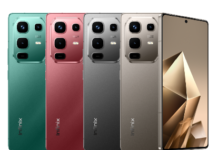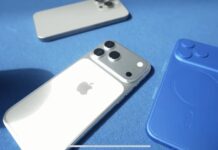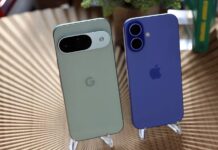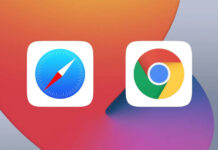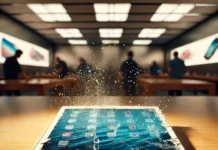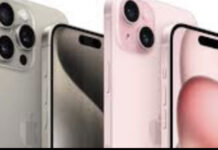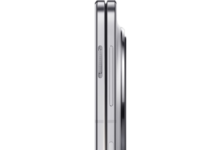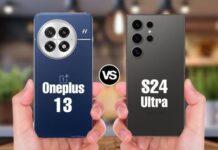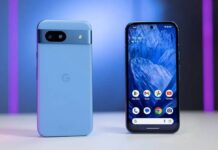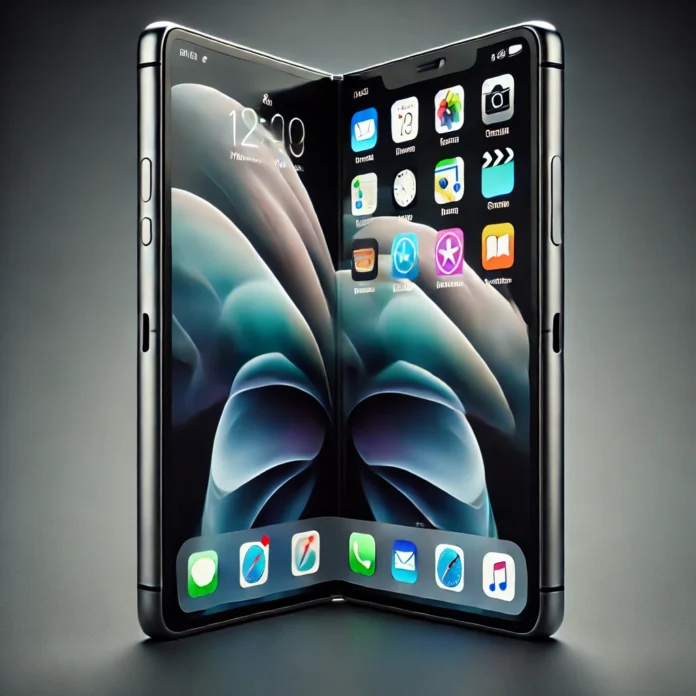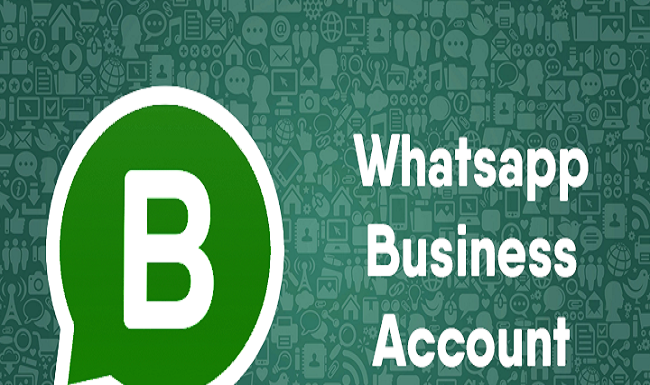The smartphone industry has been rapidly evolving over the past few years, with significant advancements in design and technology. One of the most notable developments has been the emergence of foldable smartphones, which combine portability with larger screen real estate. While companies like Samsung, Xiaomi, and Huawei have been leading the charge with foldable devices, Apple has yet to release a foldable iPhone. However, with the recent launch of the Huawei Mate X5 and now the groundbreaking Huawei Trifold smartphone, it begs the question: could Apple be next in line to enter the foldable market?
In this analysis, we’ll explore the potential future of foldable iPhones, what it could mean for users, and how the introduction of a foldable iPhone could impact the broader smartphone industry. We’ll also examine how Apple’s design philosophy could shape the foldable form factor and how the recent Huawei Trifold smartphone might influence Apple’s approach.
The Rise of Foldable Smartphones Culminates in A New Era of Innovation
Foldable smartphones are no longer just a novelty; they represent a new paradigm in smartphone design. By offering the ability to transition between a compact form factor and a larger, tablet-like display, foldable phones cater to a wide range of users who want both convenience and productivity in a single device. This form factor is particularly appealing to those who value multitasking, media consumption, and mobile gaming, as foldable screens offer increased screen real estate without sacrificing portability.
Samsung’s Galaxy Z Fold and Z Flip series, along with Xiaomi’s Mi Mix Fold and Huawei’s Mate X series, have led the charge in this category. The recently launched Huawei Trifold smartphone represents the next evolution of foldable design, offering a tri-fold mechanism that extends the screen size even further, providing a nearly tablet-sized experience when fully opened. These advancements demonstrate that foldable technology is maturing and becoming more refined with each iteration.
Apple, known for its meticulous attention to design and user experience, has been conspicuously absent from the foldable race so far. However, given the growing popularity of foldable devices and Apple’s history of entering markets with well-refined, game-changing products, it seems increasingly likely that the company is exploring the possibility of a foldable iPhone.
Speculating on a Foldable iPhone: What Could It Look Like?
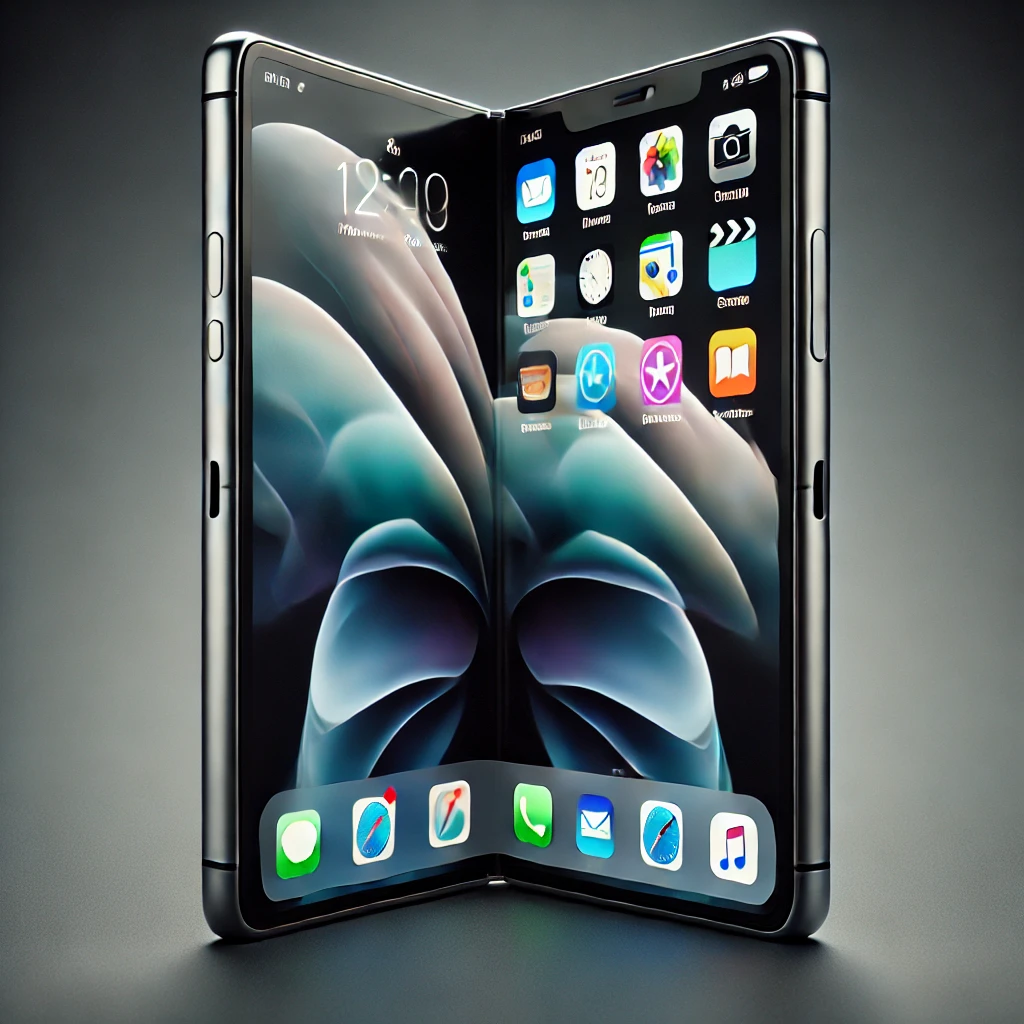
1. Apple’s Design Philosophy: Design Meets Function
Apple has always placed a premium on design, with a focus on clean, minimalistic aesthetics and seamless user experiences. If Apple were to release a foldable iPhone, it’s likely that the design would be sleek, durable, and user-friendly, with attention to the details that have made iPhones iconic.
While many current foldable smartphones have a noticeable crease where the screen folds, Apple may prioritize eliminating or minimizing this crease to create a more seamless display. Recent patents filed by Apple hint at hinge designs that would reduce the wear and tear on the display over time, potentially allowing for a foldable device that is more durable than existing models.
Apple could also take cues from Huawei’s Trifold design by experimenting with innovative folding mechanisms. While the Huawei Trifold uses a three-panel folding system to expand the display, Apple may opt for a more traditional bi-fold design initially, with the possibility of a tri-fold model later down the road. Given Apple’s focus on premium materials, we can expect the foldable iPhone to feature high-quality glass or ceramic materials that protect the display while maintaining a lightweight feel.
2. Display Technology: OLED or MicroLED?
Foldable smartphones rely on flexible display technology, primarily OLED, which allows screens to bend without breaking. Apple already uses OLED technology in its latest iPhones, and this would likely carry over to any foldable models. However, Apple has also been investing heavily in MicroLED technology, which offers several advantages over OLED, including improved brightness, longer lifespan, and better energy efficiency. A foldable iPhone could potentially be one of the first devices to feature this cutting-edge display technology, further differentiating it from competitors.
3. Seamless iOS Integration
One of the key challenges in foldable devices is ensuring that the software experience adapts smoothly to the changing form factor. Apple’s strength lies in its ecosystem, and iOS would likely play a crucial role in ensuring a seamless transition between the folded and unfolded states of the device. Given Apple’s history of optimizing software for new hardware configurations, a foldable iPhone would almost certainly offer a polished user experience with unique features designed to take advantage of the expanded display.
For example, when folded, the device could function as a standard iPhone, offering the familiar one-hand experience. When unfolded, iOS could automatically adjust the interface to a larger screen, allowing for multitasking with split-screen apps, an enhanced media-viewing experience, and potentially even a desktop-like interface for productivity tasks. Features like drag-and-drop between apps, gesture-based multitasking, and even Apple Pencil support could be further refined to take advantage of the increased screen space.
Apple’s software team could also focus on creating new interactions designed specifically for foldable devices, such as innovative use cases for gaming, video editing, and creative applications. iOS could seamlessly scale apps to adapt to the foldable form factor, avoiding some of the challenges that Android-based foldables have faced in ensuring consistent app behavior.
4. Battery Life and Performance
One of the major concerns with foldable smartphones is battery life, as larger displays tend to consume more power. Apple has made significant strides in optimizing battery life through its efficient A-series chips and hardware-software integration. For a foldable iPhone, Apple would likely focus on improving battery performance to ensure that users can enjoy extended screen time without compromising battery life.
The foldable iPhone would almost certainly feature an advanced version of the A-series chip—possibly an A18 Bionic or newer—optimized for handling the increased demands of a larger, foldable display. This would not only improve performance but also enhance energy efficiency, allowing the device to run multiple apps simultaneously without draining the battery too quickly.
Apple could also introduce a new battery technology or dual-battery system that accommodates the foldable design, similar to what we’ve seen in existing foldable smartphones. This system could help distribute power consumption across the device’s multiple panels, ensuring consistent performance whether the phone is folded or unfolded.
The Impact of a Foldable iPhone on the Smartphone Industry
Apple’s entry into the foldable smartphone market would likely have a significant impact on the industry, driving increased competition, innovation, and consumer interest in foldable devices. Here are some potential effects:
1. Raising the Standard for Foldable Devices
Apple has a history of taking existing technologies and refining them to the point where they become mainstream. For example, Apple wasn’t the first to introduce touchscreen smartphones or tablets, but the iPhone and iPad revolutionized their respective markets by delivering a more polished and user-friendly experience. Similarly, a foldable iPhone could set new standards for durability, usability, and design, pushing other manufacturers to innovate further.
Competitors like Samsung, Huawei, and Xiaomi have already established themselves as leaders in the foldable space, but Apple’s entry could force these companies to further refine their devices in terms of hardware quality, software integration, and overall user experience. This could lead to faster advancements in foldable technology and a wider variety of options for consumers.
2. Shaping Consumer Expectations
Foldable smartphones are still relatively niche products due to their high price tags and durability concerns. However, Apple has a unique ability to shape consumer behavior and create demand for new product categories. A foldable iPhone, if designed with the right balance of innovation, usability, and price, could accelerate the adoption of foldable devices among mainstream consumers.
Apple’s marketing prowess and loyal user base could also help normalize the foldable form factor, turning it from a novelty into a must-have feature for future smartphones. This would likely result in more manufacturers entering the foldable market, driving prices down over time and making foldable smartphones more accessible to a wider audience.
3. Implications for Developers and App Ecosystems
The introduction of a foldable iPhone would have a ripple effect on the app development ecosystem. Developers would need to optimize their apps for the foldable form factor, taking advantage of the expanded screen space and unique interaction possibilities. This could lead to the creation of entirely new app experiences designed specifically for foldable devices.
Apple’s strong developer community and the App Store’s strict guidelines would ensure that apps are optimized for the foldable iPhone, delivering a consistent and high-quality user experience. This focus on quality could further differentiate the foldable iPhone from its Android counterparts, where app optimization for foldable devices has been more fragmented.
4. Future of the Foldable Market: Inspiration from Huawei’s Trifold
The recent launch of the Huawei Trifold smartphone adds a new dimension to the foldable market, offering a device that folds not just once but twice, creating a larger display area when fully unfolded. This tri-fold mechanism opens up new possibilities for multitasking, entertainment, and productivity. If Apple were to explore a similar design, it could push the boundaries of what’s possible with a foldable device, further blurring the lines between smartphones, tablets, and even laptops.
While Apple is known for taking a more conservative approach to new technologies, preferring to perfect them before launching, the success and innovations of competitors like Huawei will undoubtedly influence its decisions. A foldable iPhone could start with a bi-fold design, but as the technology matures, Apple might explore more advanced folding mechanisms similar to the Huawei Trifold, offering users even more versatility and screen space.
